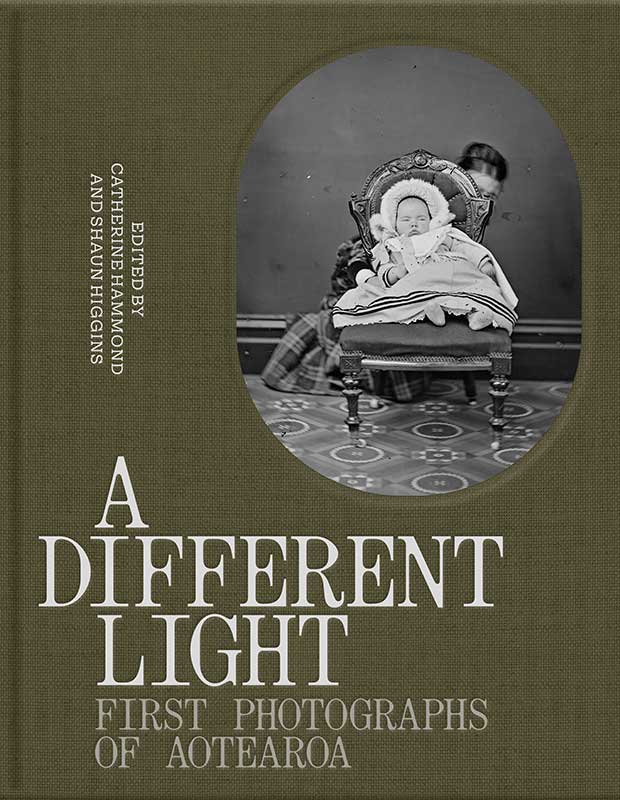A snapshot in time: Earliest known photographs of Aotearoa/New Zealand exhibited in new book
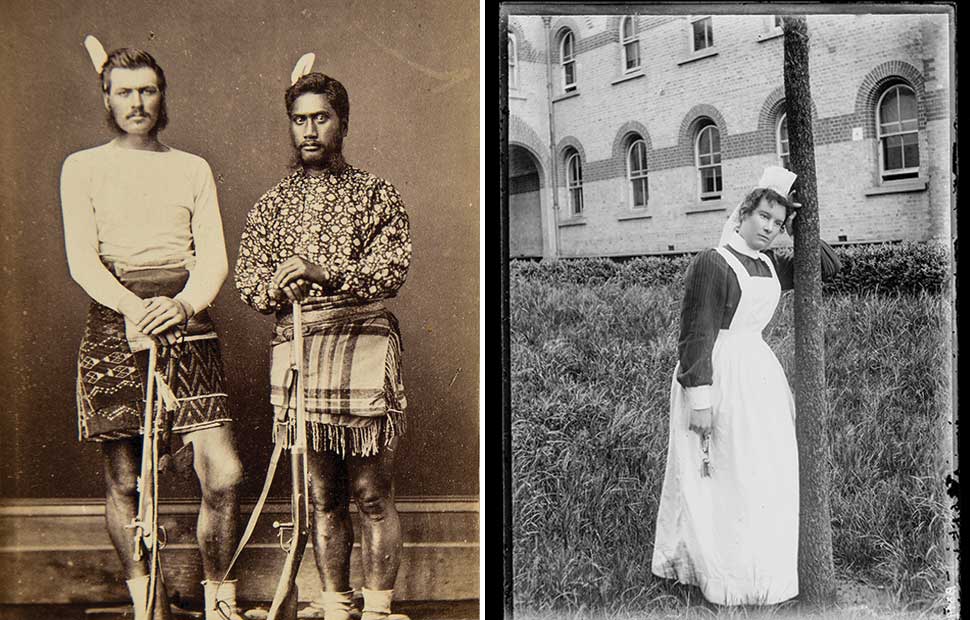
See early nineteenth-century Aotearoa/New Zealand like never before
Photography arrived in Aotearoa in 1848, only two decades after its invention. How did these ‘portraits in a machine’ reveal Māori and Pākehā to themselves and each other? Were the first photographs ‘a good likeness’ or were they tricksters? What stories do they capture of the changing landscape of Aotearoa?
A new book is giving us a glimpse into some of the country’s earliest known photographs. Accompanied by essays from history experts, A Different Light: First Photographs of Aotearoa (Auckland University Press, rrp $65) features startlingly clear portraits and landscapes that are some of the country’s earliest known photographs.
Editors Catherine Hammond and Shaun Higgins bring together the extraordinary and extensive photographic collections of three major research libraries – Tāmaki Paenga Hira Auckland War Memorial Museum, Alexander Turnbull Library and Hocken Collections Uare Taoka o Hākena – to coincide with a touring exhibition of some of the earliest known photographs of Aotearoa.
See some of the book’s most striking images below, before checking out the exhibition in Auckland, Wellington, or Dunedin.
Plate 53: Batt & Richards, Tom Adamson and Wiremu Mutu Mutu, Wanganui, 1867–74, albumen silver print, carte de visite (103 × 64 mm)
Hocken Collections Uare Taoka o Hākena, University of Otago, P1971-005/1-012c
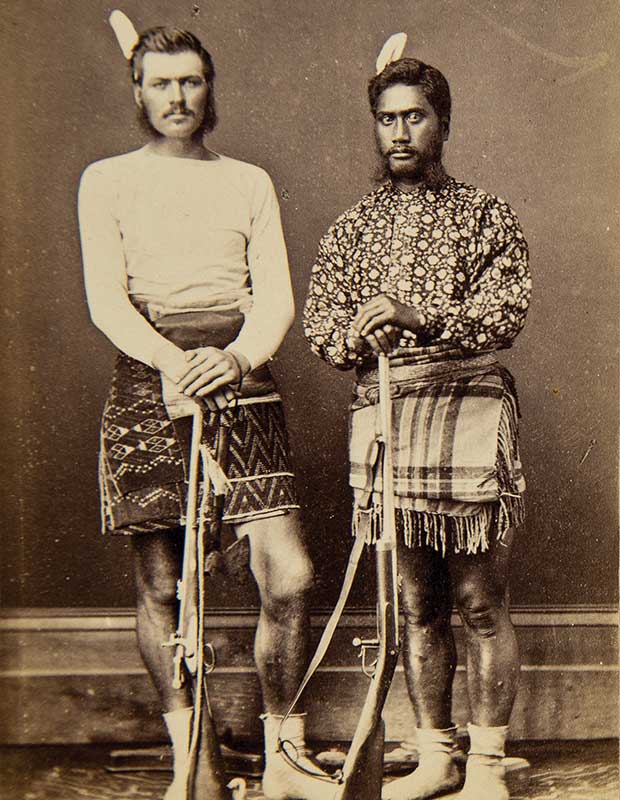
This studio carte de visite provides striking evidence of cultural exchange in the way of Māori and European fabrics and designs, with Tom Adamson on the left wearing a woven flax kaitaka with a geometric tāniko border, and Wiremu Mutumutu on the right wearing a fringed tartan rug, both in the manner of kilts. Adamson worked alongside Māori as a military scout and guide, hunting down dissidents in the dense native bush for pro-government forces during the New Zealand Wars. This service earned him a New Zealand Cross in 1876.
Fig 1.39: Margaret Matilda White, Self Portrait, c. 1897, half-plate gelatin silver glass negative (164 × 120 mm)
Tāmaki Paenga Hira Auckland War Memorial Museum, PH-1965-4-B3493
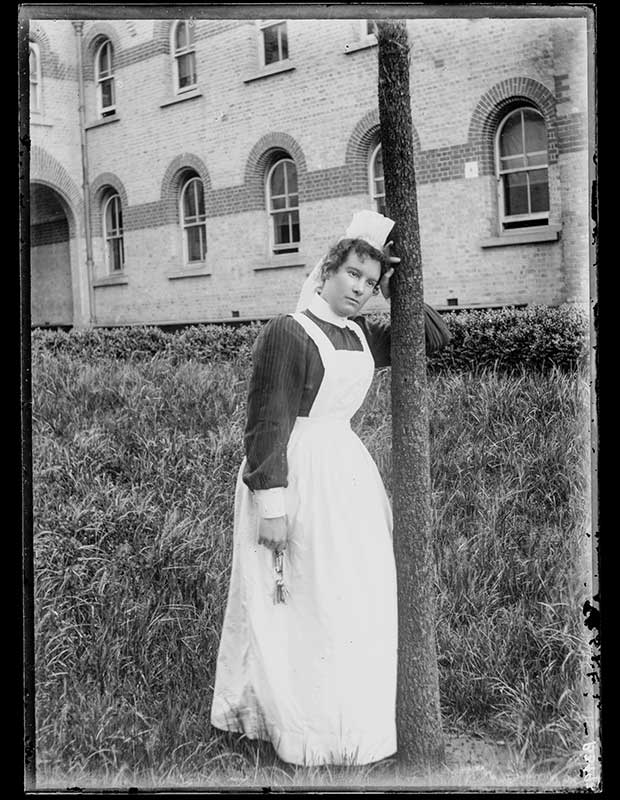
A series of photographs taken around 1897 by Margaret Matilda White (1868–1910) at the Whau Lunatic Asylum, also known as the Avondale Asylum, show a rare example of what appear as deliberately staged images of staff in the grounds. Starting as an apprentice to Hanna in 1890, White briefly operated a studio in Queen Street. She spent some time working as an attendant at the asylum, photographing the staff on location using a dry-plate camera. The playful approach White takes shows an unexpected side to her sitters, despite their formal uniforms. Arranged in the grounds, sitting together for a portrait, the men and women who worked at the asylum appear to have shed the formality of the studio. Even when they appear lined up in rows, they all look in different directions as a man peers through the window behind them. One image, thought to be a self-portrait, shows White in her uniform holding a set of keys. An informal portrait taken at Huia Private Hospital shows staff smoking together on a break: a far cry from the wooden poses of early likenesses.
Fig. 4.17: Henry Wright, Rahui Te Kiri Tenetahi [right] and her daughter Ngāpeka Te Roa of
Ngāti Manuhiri, 1893, full-plate gelatin silver glass negative (216 × 165 mm) Alexander Turnbull Library, 1/1-020598-G
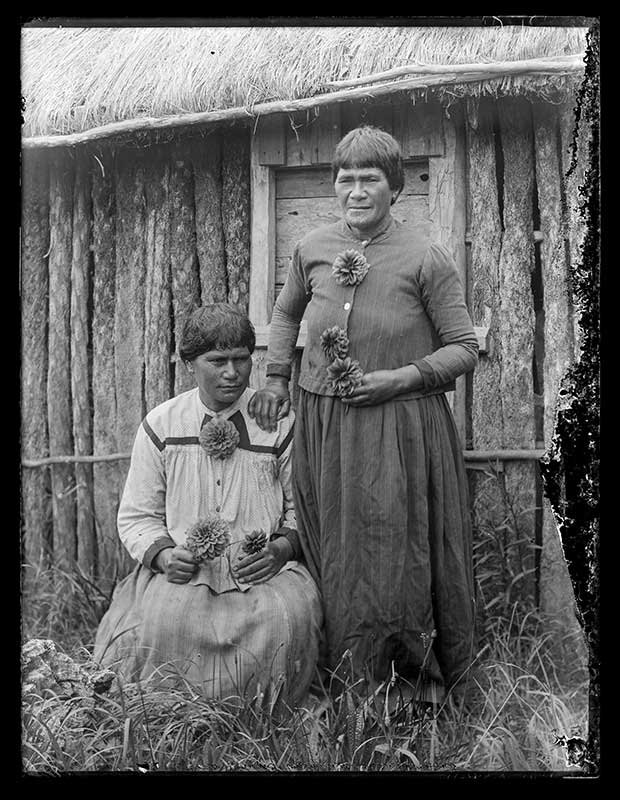
Henry Wright spent nearly three months living on the island and produced a report for the government on its value as a bird reserve. After the government purchased
the island from iwi and it was declared a forest reserve and bird sanctuary, Wright was appointed its first ranger. Wright’s series of photographs capture the vegetation, coastline and the last of the mana whenua, Ngāti Manuhiri, to live and sustain themselves on the island, including Rāhui Te Kiri Tenetahi, her daughter Ngāpeka Te Roa, and her second husband Wiremu Tenetahi, who were forcibly evicted just three years after Wright had visited the island.
Images and text extracted from A Different Light: First Photographs of Aotearoa (Auckland University Press, rrp $65).
